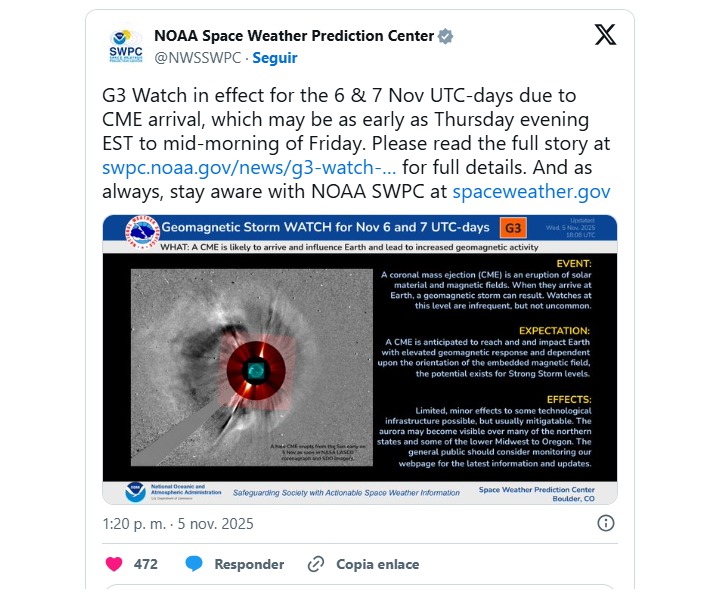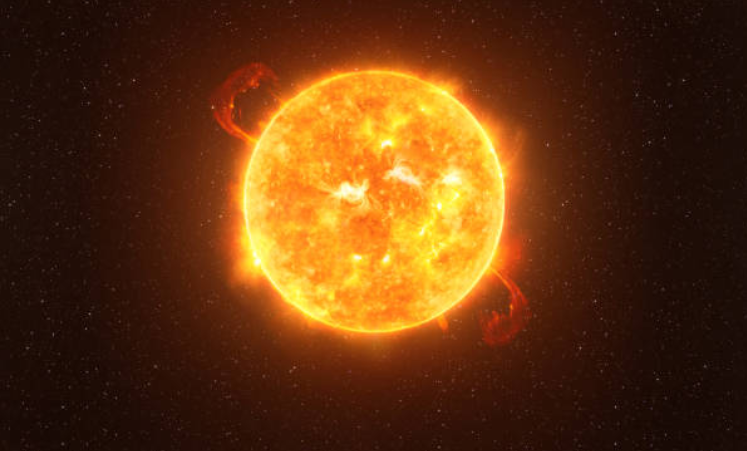Warning issued for a powerful solar storm expected to reach Earth in the coming hours: it could cause disruptions to communication and navigation signals.

The NOAA Space Weather Prediction Center recently issued a G3 alert, reporting the arrival on Earth of a strong coronal mass ejection (CME) , commonly known as a solar storm.
According to the US center, this event is expected to reach the planet on November 6th and 7th of this year.
“There is a high degree of confidence that the EMC is headed toward Earth and a moderate level of confidence in the timing of its arrival, which we anticipate will be between Thursday night and Friday morning ,” NOAA said.

Alert from NOAA's Space Weather Prediction Center. Photo: NOAA Space Weather Prediction Center / X
According to NOAA, this type of phenomenon can affect communications, especially high-frequency radio communications , impacting areas of the planet that are illuminated when solar waves reach Earth.
On the other hand, although to a lesser extent, it could also affect low-frequency navigation signals , both in short and long intervals.
According to National Geographic, this phenomenon has different categories; in this case, it is classified as a G3 (strong) storm , which can cause solar waves to generate auroras visible in areas far from the usual.
The Space Prediction Center clarifies that solar storms can vary in intensity depending on various factors, such as speed, magnetic strength, and magnetic field orientation (EMC).

The phenomenon occurs when there is a large number of charged particles emitting radiation. Photo: ESA - NASA
“We must wait until the EMC reaches the solar wind observation spacecraft located at Lagrange Point 1 (L1), 1.6 million kilometers from Earth, to determine its true intensity. At that point, we will know the speed, magnetic strength , and orientation of the EMC’s magnetic field,” the Space Weather Prediction Center stated.
What is a solar storm? National Geographic specifies that this event, also known as a geomagnetic storm , occurs when the Sun emits a large amount of charged particles with electromagnetic radiation that impact the Earth's magnetic field.
These coronal mass ejections (CMEs) cause solar flares and high-speed solar wind streams, which during their journey can release plasma and magnetic fields from the Sun.
The organization clarifies that this phenomenon occurs regularly on Earth and that there is a risk scale that allows measuring the potential danger of each event.
According to NOAA (the United States National Oceanic and Atmospheric Administration), these events are classified on a 5-level scale, ranging from G1 (minor) to G5 (extreme) .

These coronal mass ejections (CMEs) cause solar flares. Photo: iStock
LATEST NEWS EDITORIAL
eltiempo




